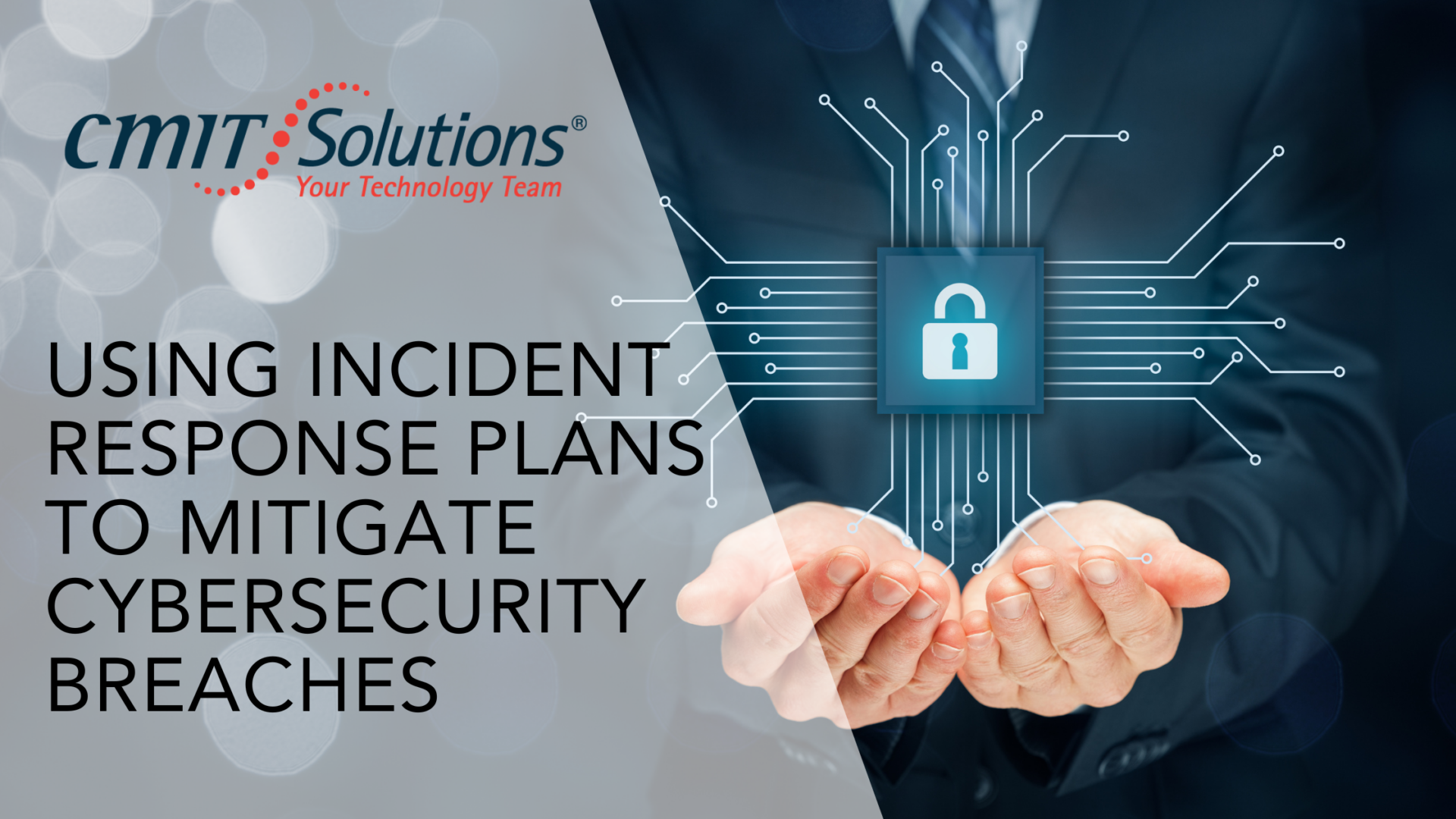- A cybersecurity incident response plan (IRP) is a step-by-step guide outlining procedures to follow when a cybersecurity incident occurs.
- The steps to create an IRP include identification, detection, containment, eradication, recovery, and debriefing.
- Key practices during an incident include adhering to the IRP, training employees, using security tools effectively, regularly testing and updating the plan, and collaborating with external partners.
From sophisticated ransomware attacks to subtle data breaches, the potential for disruption and financial loss has increased for companies. While proactive measures can help, your business needs a strong security posture to reduce data breaches and financial losses. One of the most vital components of a strong security posture is a well-defined and regularly tested cybersecurity incident response plan.
Here’s a look at the importance of an incident response plan during a cybersecurity breach.
What Is a Cybersecurity Incident Response Plan?
A cybersecurity incident response plan (IRP) is a documented, step-by-step guide that outlines the procedures a business will follow when a cybersecurity incident occurs. An IRP equips your team with the knowledge and processes needed to effectively manage and recover from a cyberattack. It’s not just a theoretical document but a practical playbook that provides clear instructions, roles, and responsibilities to minimize damage, restore operations, and learn from the experience.
A comprehensive IRP anticipates various types of cyberincidents, from malware infections and phishing attacks to denial-of-service attacks and data exfiltration. It provides a structured approach to dealing with these situations, ensuring a coordinated and effective response rather than a chaotic scramble.
Why Is an Incident Response Plan Important?
The importance of a well-crafted incident response plan cannot be overstated in today’s threat environment. Without one, you are left vulnerable to prolonged downtime, significant financial losses, reputational damage, and potential legal repercussions.
- Minimizes Damage: A swift and well-coordinated response, guided by an IRP, can limit the scope and impact of a cyberattack, preventing it from escalating into a catastrophic event.
- Reduces Downtime: An IRP provides a clear path to recovery, enabling organizations to restore critical systems and operations more quickly, minimizing business interruption and associated costs.
- Lowers Recovery Costs: A proactive approach outlined in an IRP can help control the costs associated with incident response, such as forensic investigations, legal fees, and recovery efforts. A disorganized response can lead to unnecessary expenses and delays.
- Protects Reputation: A well-handled incident, guided by a clear plan, can demonstrate to customers, partners, and stakeholders that your business takes security seriously. This can help preserve trust and mitigate potential reputational damage.
- Ensures Compliance: Many regulatory frameworks, like GDPR, HIPAA, and PCI DSS, mandate that organizations have incident response procedures in place. An IRP helps adhere to compliance requirements and avoid potential fines and penalties.
- Facilitates Communication: An IRP clearly defines communication channels and responsibilities, ensuring that relevant stakeholders are informed throughout the incident response process. This includes internal teams, executive leadership, and potentially external parties like law enforcement or regulatory bodies.
- Improves Future Security Posture: The incident response process, particularly the debriefing stage, provides valuable insights into vulnerabilities and weaknesses in your security defenses. This learning can be used to strengthen your overall cybersecurity posture and prevent future incidents.
Steps to Create an Incident Response Plan
Developing an effective cybersecurity incident response plan is a multi-stage process that requires careful planning and collaboration across different departments. Here are some of the key steps involved:
Identification
The first step involves establishing clear definitions of what constitutes an incident and implementing mechanisms for reporting and recognizing suspicious activities. This could include unusual network traffic, unauthorized access attempts, malware alerts from security software, or reports from employees about suspicious emails or system behavior. Clear reporting channels and employee training are vital for effective identification.
Detection
Once a potential incident is identified, the next step is to accurately detect and analyze it to determine its nature, scope, and severity. This often involves using specialized tools. Your company may also need specialized cybersecurity experts to analyze alerts, investigate logs, and correlate data to understand the full context of the incident. Accurate detection is critical for initiating the appropriate response actions.
Containment
The primary goal of the containment phase is to limit the spread and impact of the cybersecurity incident. This may involve isolating affected systems or network segments, disabling compromised accounts, or blocking malicious traffic. The specific containment strategies will depend on the type and severity of the incident. It’s crucial to act quickly and decisively during this phase to prevent further damage and data compromise.
Eradication
Eradication focuses on eliminating the threat actor, malware, or vulnerability that caused the incident. This might involve removing malicious software, patching vulnerable systems, rebuilding compromised servers, or revoking unauthorized access. This phase often requires specialized technical expertise and meticulous attention to detail.
Recovery
After eradication, it’s important to restore affected systems and data to their normal operational state. This may include restoring backups, rebuilding systems, and verifying the integrity of the recovered data. A well-defined recovery plan should include regular backups and disaster recovery procedures. This phase also involves monitoring the systems to ensure they remain secure and stable.
Debrief
The final, and often overlooked, step is the debriefing or post-incident analysis. Once the incident has been resolved and systems are back online, you should conduct a thorough review of the entire incident response process. This involves identifying what went well, what could have been done better, and what lessons can be learned to improve the IRP and overall security posture. This analysis should lead to updates, refinements, and the implementation of additional security measures to prevent similar incidents in the future.
Practices to Follow During a Cybersecurity Incident
Having a well-documented IRP is only the first step. To effectively mitigate cyberbreaches, organizations must also adhere to certain practices during an actual incident:
- Adhere to the Incident Response Plan: The IRP serves as the guiding document during an incident. Your response team should follow the established procedures and protocols outlined in the plan to ensure a coordinated and effective response. Deviating from the plan can lead to confusion and delays.
- Train Employees Regularly: Employees are often the first line of defense against cyberthreats. This includes regular cybersecurity awareness training, including how to identify and report suspicious activity. Employees should also be familiar with their roles and responsibilities in the incident response process.
- Use Security Tools Effectively: Invest in and properly configure security tools such as firewalls, antivirus software, intrusion detection systems, and SIEM solutions. Your team should actively monitor the tools and investigate the alerts promptly.
- Regularly Test and Update the Plan: The threat landscape is constantly evolving, and your plan must adapt accordingly. Regular testing, through tabletop exercises or simulations, helps identify weaknesses. This also lets your response team familiarize themselves with the procedures. The plan should be reviewed and updated at least annually, or whenever there are significant changes to the IT environment or threat landscape.
- Collaborate with External Partners: Depending on the nature and severity of the incident, it may be necessary to collaborate with external partners like cybersecurity consultants, forensic investigators, or law enforcement agencies. Having established relationships and communication channels with these partners can expedite the response and recovery process.
Key Considerations for Your Cybersecurity Incident Response Plan
When developing and implementing your cybersecurity incident response plan, consider the following key elements:
- Senior Management Support: Strong support and buy-in from senior management are vital for the success of the IRP. Leadership must understand the importance of incident response and allocate the necessary resources for its development, implementation, and testing.
- Testing the Plan: Regular testing is essential to validate the effectiveness of the IRP and identify any gaps or weaknesses. Different types of testing, like tabletop exercises, walk-throughs, and simulated attacks, can provide valuable insights.
- Flexibility: While a structured approach is important, the IRP should also be flexible enough to adapt to different types of incidents. Since all cyberattacks are not the same, the response should be tailored to the specific circumstances.
- Clear Communication Channels: Establishing clear and reliable communication channels will let you keep all relevant stakeholders informed during an incident. This includes internal teams, management, legal counsel, public relations, and potentially external parties.
- Simplicity and Clarity: The IRP should be written in clear, concise, and easy-to-understand language. Avoid technical jargon that may confuse those who are not security experts. A simple and straightforward plan is more likely to be followed effectively during a high-pressure situation.
- Identifying Skill Gaps: Assess the skills and expertise of your internal team and identify any gaps that may need to be addressed through training or by engaging external specialists. Having the right people with the right skills is critical for an effective response.
- Legal and Regulatory Considerations: Ensure that your IRP takes into account all relevant legal and regulatory requirements, like data breach notification laws and industry-specific regulations. Consult with legal counsel to ensure compliance.
- Documentation: Maintain thorough documentation throughout the incident response process, including timelines, actions taken, findings, and lessons learned. This documentation can be valuable for future analysis and legal purposes.
Choosing CMIT Solutions East Brunswick for Your Incident Response Plan
In the face of increasingly sophisticated cyberthreats, a robust cybersecurity incident response plan is no longer a luxury but a fundamental necessity. It provides a structured framework for responding to cyberattacks, minimizing damage, reducing downtime, and protecting your valuable assets and reputation.
At CMIT Solutions East Brunswick, we understand the complexities of cybersecurity and the critical role that incident response planning plays in protecting your business. Our experienced IT professionals can help you develop a comprehensive and tailored incident response plan that aligns with your specific needs and risk profile. We can also assist with employee training, security tool implementation, and ongoing support to ensure your organization is well-prepared to face the evolving landscape of cyberthreats.
Don’t wait until an incident occurs to think about your response. We at CMIT Solutions East Brunswick can help you build a strong cybersecurity foundation and develop an effective incident response plan. Contact us today to book a consultation!





